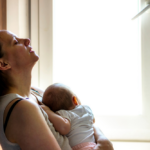Furry family
Pet planning Plan on having a baby in the near […]

Plan on having a baby in the near future but want to add a canine companion or a feline friend to the family first? Consider a breed that has a reputation for being naturally good with children.
[tip:] Experts recommend waiting until your child is at least 3-years old before bringing a new pet home if you don’t have one already.
Child-friendly dogs: Labrador/Golden Retriever, Bichon Frise, Beagle/Standard Schnauzer, Collie, Basset Hound, Standard Poodle, Dachshund, Pug
[tip:] If you are planning on bringing a baby into the picture sooner rather than later, consider getting a dog that is 1 to 3 years old; older dogs are more likely to be gentle with a newborn.
[fact:] A 2006 study in Pediatrics found that babies under 1 year of age are the most likely to be bitten by dogs. Never leave your child alone with your pet, no matter how mild-mannered your pup may be.
Child-friendly cats: American Wirehair, American Shorthair, Birman, Burmese, Japanese Bobtail, Maine Coon, Manx, Sphynx
[tip:] Male cats tend to be better with children as female cats are known for their independent nature.
Safety First
Did you know that children under the age of five catch diseases from animals more frequently than anyone else? Read up on these tips from the CDC for protecting your little one from the dangers of the animal kingdom:
- Children younger than 5 should be supervised while interacting with animals.
- Children should not be allowed to kiss pets or to put their hands or other objects into their mouths after handling animals.
- Children’s hands should be washed thoroughly with running water and soap after contact with animals.
- Handwashing prior to breastfeeding or preparation of formula is strongly recommended.
Prepare your pet
While baby-proofing your house for the arrival of your new addition, don’t forget to baby-proof your pet too!
First trimester
Enroll your pet in a positive reward-based training class.
Visit the vet for a complete check-up and any necessary vaccinations.
If your pet is not spayed or neutered already, do it now.
Second trimester
Prepare and introduce your pet to a secure crate or confinement area.
Try introducing your pet to baby sounds on CD and practice holding a baby doll around your pet to see how he reacts.
Introduce your pet to any baby equipment you will be using after the birth.
Third trimester
Allow your pet to spend more time in his safe confinement area so he can become comfortable being alone with his toys.
Put up baby gates if you will be using them and allow your pet time to learn which areas will become off-limits.
Stage baby feeding time with your pet in his confinement area to get him accustomed to your time alone with the baby.
The green-eyed monster
It’s understandable that your pet might get a little jealous of the new baby. After all, before the stork came he probably considered himself king of the castle. Monitor your pet’s behavior for these signs of acting out:
- Biting, nipping, pawing or growling
- Raised hair, pinned-back ears or downward pointing tail
- Soiling (for dogs)/Marking or spraying (for cats)
- Withdrawn behavior
- Refusal to eat
- Slinkiness when approaching the baby (for cats)







